This is a continuation of my first post – Hot Streets of Kolkata: Part 1
We flag a yellow cabby and inch across the Howrah Bridge to our last destination. Walking among the traffic are salesmen with food, trinkets, flowers, and candy. A benefit of slow traffic is the ability to purchase just about anything through the open window of your cab. I would say that benefit doesn’t outweigh the hour spent in traffic during the heat of the day. Grab a sweet to take your mind off the heat.
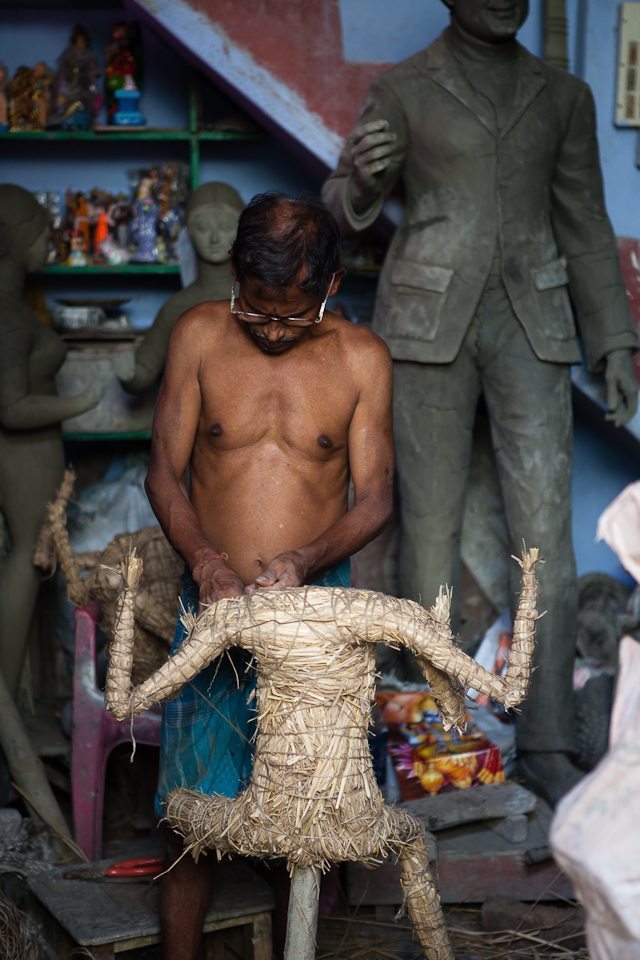 Our destination is Kumartoli, the historic artist district full of sculptors and painters. This is the birthplace of the thousands of sculptures used in various Indian festivals. Durga Puja is approaching in October and the artists are constructing statues of the Hindu gods Durga and Ganesh.
Our destination is Kumartoli, the historic artist district full of sculptors and painters. This is the birthplace of the thousands of sculptures used in various Indian festivals. Durga Puja is approaching in October and the artists are constructing statues of the Hindu gods Durga and Ganesh.
Durga is a powerful form of the Hindu goddess. Her sculptures are a bit terrifying, depicting her figure atop a lion crushing a demon. She has ten arms. Ganesh is the elephant headed god of wisdom, luck, and prosperity. I don’t know very much about the Hindu faith – if I get something wrong, let me know! It seems like every person I asked in India had something different to say about their religion – so it is a dynamic one, which is wonderful.
The sculptures start with a base of straw to create the bulk of the form. The straw is shaped and tied with twine to give a rough figure of the final shape. Mud, trucked in from the Ganges, is packed onto the straw forms and smoothed into a final depiction of the god or goddess. The finest details including facial features and fingers are left until the end. In fact, the fingers are made separately and then attached to the hand of the sculpture.
The sculptures are towering – some are twice my height. They are lined up and stored in dusty, shadowy dark structures. The village is slipshod, and most structures are amalgamations of corrugated metal, wood timbers, and tarps that cast an eerie blue or red glow on the figures within.
The artisans light fires in clay pots within the dark tented rooms to heat and dry the air to solidify the grey river clay in preparation for painting.
The statues are colorfully painted in great detail. Many in soft pastel colors. The paint gives life to the statues as they previously appeared eerie and medusa-like in their natural grey color form.
Soon all of the statues are painted, sold, and displayed along the streets of Kolkata for Durga Puja. A final festival procession brings the statues to the banks of the river where they are submerged and reach their final resting place in the mother Ganga.
The artisans are crucial to the festival in Kolkata, but from my understanding of speaking with Rajdeep and Paul, there is very little support for them by the government. They live in relative squalor. This is a recurring theme in India, more-so than in the rest of the world because of their caste system – those who perform a service crucial to Indian life are often found at the bottom of society with little hope for upward mobility. Another example of this are the doms in Varanasi – the untouchables who carry the deceased to the river for spiritual cleansing before cremation.
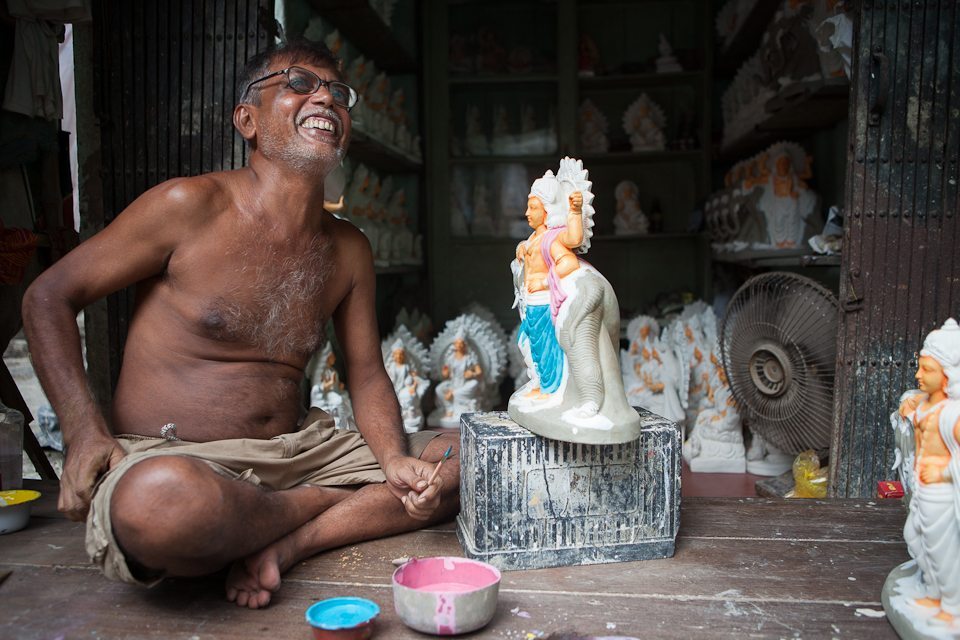
The happy painter takes a break from painting his figurines.
We tried many street foods and my stomach seems to be holding up well, to my relief. The Indians love masala, which is their main curry spice. They put masala in everything. I tried masala soda. I did not enjoy it. I tried masala candies – also not enjoyable.
By the end of the day I’m exhausted. Hours of walking in the sun, constant beeping of horns and no shower or change of clothes for the past couple of days is getting to me.
Overall, I was surprised with the city. Kolkata is a little cleaner than Varanasi or Agra. People and cows are not shitting in the streets, and I even spotted a few trashcans. They were empty.
That night I would sleep for over twelve hours.
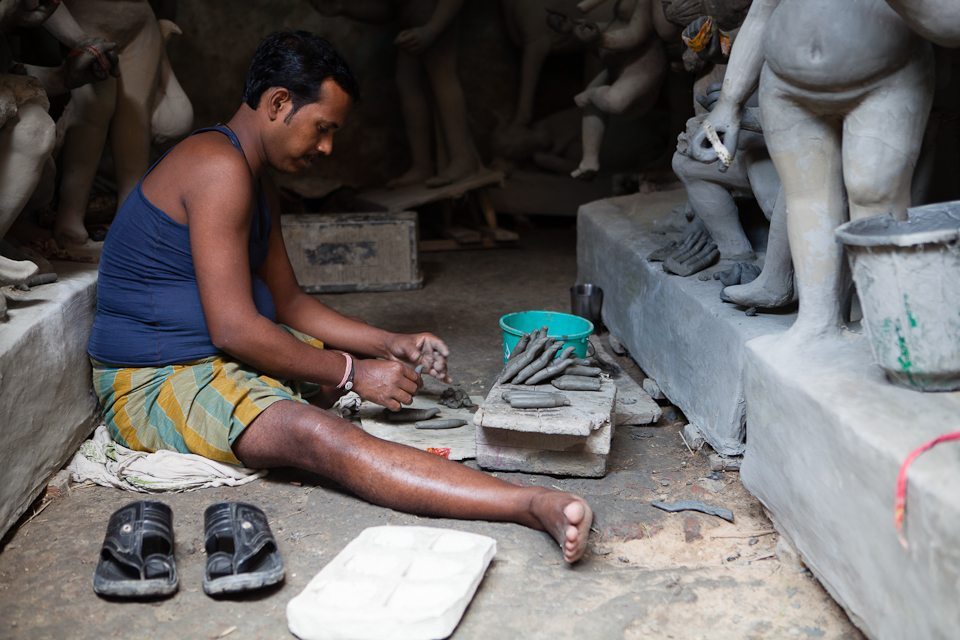
The happy painter takes a break from painting his figurines.

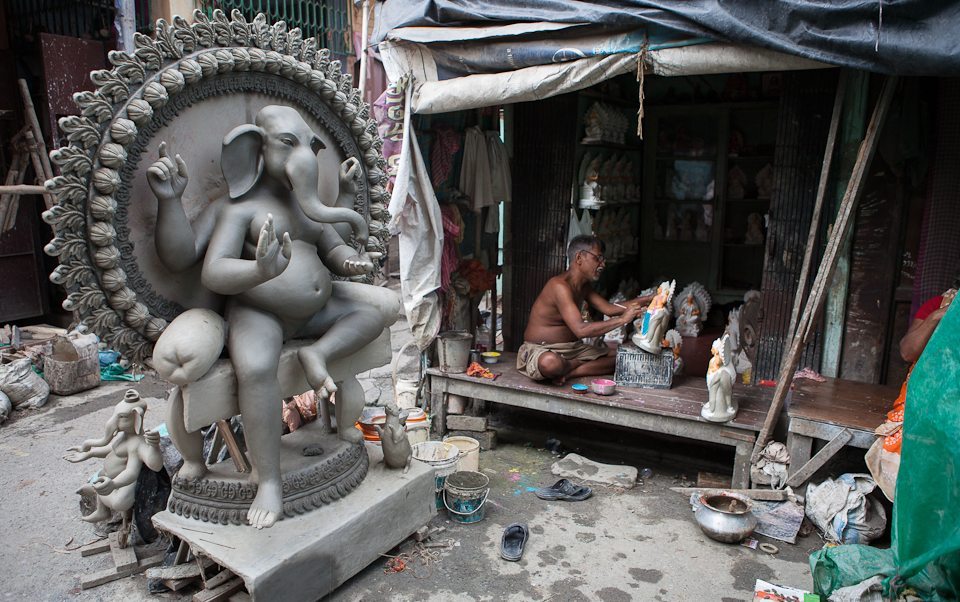
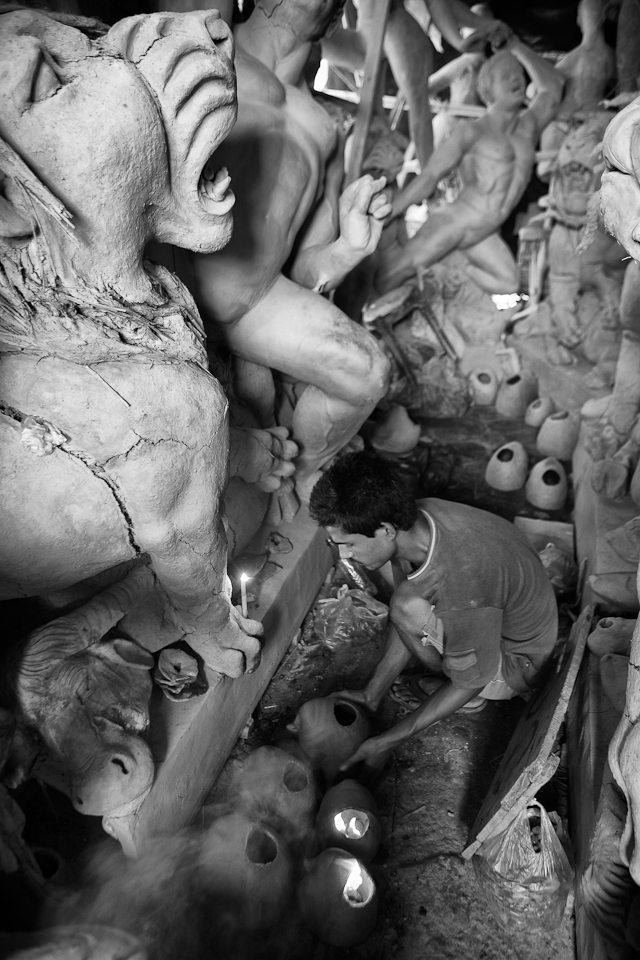
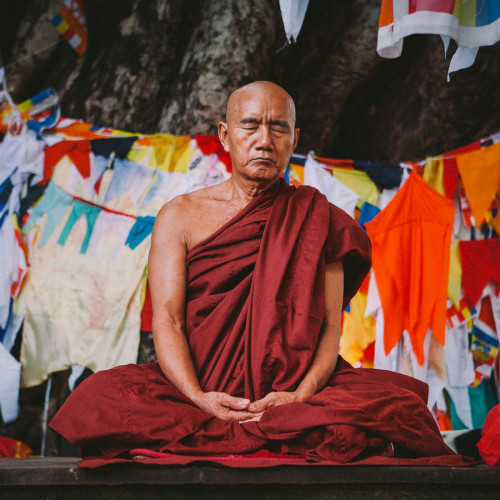
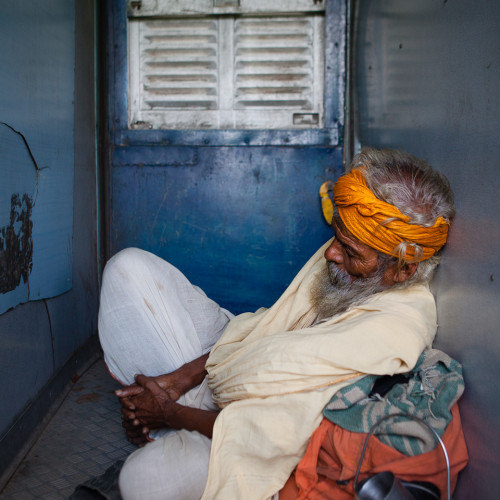
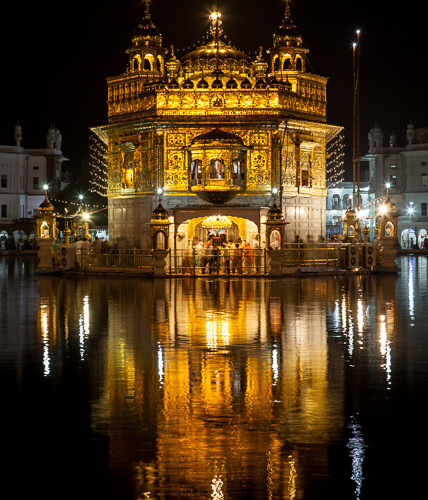
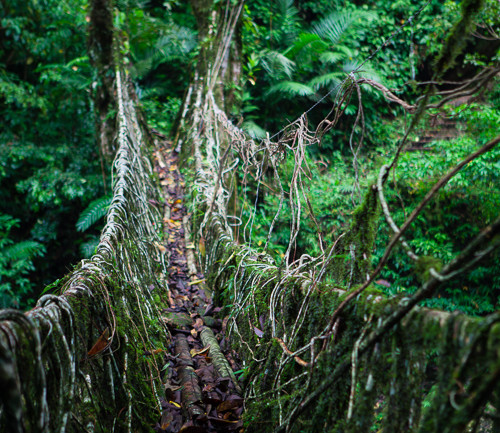
Leave a reply